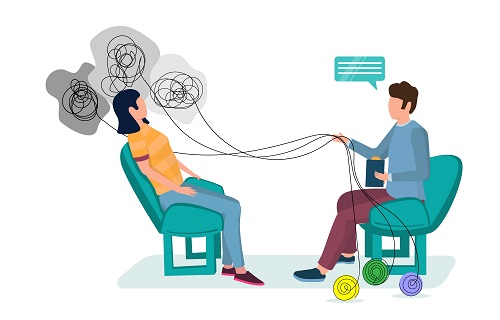Rational is Emotive Therapy (RET) a cognitive psychotherapy which focuses on taking responsibility and practicing rational and realistic thinking. It is based on the idea that events do not make us feel emotions but it is our beliefs about these events create our emotions. The therapy was developed by Albert Ellis in 1955. The name of the therapy was changed to Rational Emotive Behaviour Therapy in 1992.
Goals of Therapy:
Main goal of the RET (or REBT) is to rid the patients of their present negative philosophies, and replace them with more realistic and flexible philosophies as a means of finding happiness. The therapy is based on the principle that a person is responsible for his emotions as well as actions, and also that he can overcome his negative responses by thinking in a more realistic way. In a nutshell, REBT helps people recognize and alter irrational beliefs and negative thinking patterns in order to overcome psychological problems and mental distress.
Role of REBT:
REBT is best for the patients who want proactive and present-oriented treatment as a means of coping with the difficulties they are currently facing in their life. It can work for anyone facing mental problems like fear, guilt, depression, hostility and addiction etc. This therapy offers target solution for those who believe in self help as a main solution to their problems.
Techniques of Rational Emotive Therapy:
The therapy distinguishes between these two types of problems: (1) Practical problems involving unwanted situations, our own negative behaviors and unfair treatment we receive from others, (2) Emotional problems which are the tendencies which make us get upset when practical problems occur.
As a technique, the client is asked to identify their irrational philosophies which are in the form of a MUST. There are three types of MUSTS.
The first is the demand on yourself, like “I must look smartly dressed, otherness I will not be acceptable in society". Second is the demand on others, like, my friends MUST help me in business if I am to be successful. Third is the demand on situation like, it must not rain on the day I am planning to start my journey, etc. The therapy teaches a person to shed these MUSTs and rather turn them into his preferences. This technique can be represented in the form of ABC model.' 'A' is the Activating event, 'B' is the Belief the patient has about this event, whether rational or irrational. 'C' is the Consequence of this belief which includes behavioural and emotional responses and further thoughts in this respect. By this therapy, we modify the Irrational Beliefs into Rational Beliefs, and thereby change the consequences too.



